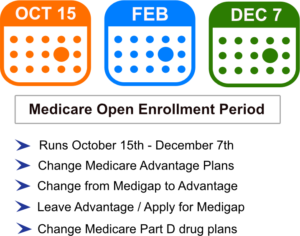What Are Medicare Advantage Plans?
Medicare Advantage Plans, also known as Part C, are private health plans approved by Medicare that cover all Medicare-covered services. These plans provide an alternative to Original Medicare, often bundling together hospital (Part A) and medical (Part B coverage) insurance, and frequently include additional services such as prescription drug coverage, dental care, and vision benefits.
Unlike Original Medicare, which is managed by the federal government, Medicare Advantage Plans are offered by private insurance companies that Medicare approves. This means that the guidelines and coverage details of these plans can vary annually, affecting what services are covered and how much you might pay out-of-pocket.
Medicare Advantage Plans often offer more comprehensive health coverage than traditional Medicare. They bundle additional benefits into one cohesive plan, simplifying the management of your overall health and wellness.
Types of Medicare Advantage Plans

Medicare Advantage Plans come in several types, each with unique features and benefits tailored to different healthcare needs and preferences. Knowing these plan types can assist in selecting the one that suits your needs best.
The most common types of Medicare Advantage Plans include:
- Health Maintenance Organization (HMO) plans
- Preferred Provider Organization (PPO) plans
- Private Fee-for-Service (PFFS) plans
- Special Needs Plans (SNPs)
Each of these plans offers distinct advantages and specific rules regarding how health care providers and covered services vary.
Health Maintenance Organization (HMO) Plans
Health Maintenance Organization (HMO) plans typically require members to choose a primary care doctor to coordinate their healthcare services. This doctor provides a referral to specialists, ensuring efficient management of your care.
HMO plans generally restrict coverage to doctors and hospitals within their network, except in emergencies. Using the network’s healthcare providers ensures a coordinated approach to your care, especially for those considering HMOs.
Preferred Provider Organization (PPO) Plans
Preferred Provider Organization (PPO) plans offer more flexibility than HMO plans. Members can visit any healthcare provider, including those outside the network, without referrals. This makes PPO plans attractive for individuals seeking more control over their healthcare choices.
However, choosing to see network providers outside the network can result in higher costs. PPO plans typically have higher premiums and out-of-pocket expenses compared to HMO plans, but they provide greater freedom in selecting healthcare providers.
Private Fee-for-Service (PFFS) Plans
Private Fee-for-Service (PFFS) plans are another type of Medicare Advantage Plan with the following characteristics:
- Beneficiaries can see any doctor or hospital that accepts Medicare and agrees to the plan’s payment terms.
- The insurance company determines how much it will pay providers.
- The insurance company also determines how much members must pay for services.
While PFFS plans offer flexibility, not all healthcare providers or other providers may accept the plan’s terms. Confirm with providers beforehand to ensure they accept the plan.
Special Needs Plans (SNPs)
Special Needs Plans (SNPs) are designed for individuals with specific diseases or characteristics, such as chronic conditions or disabilities.
These plans offer tailored benefits and services, meeting the unique needs of their members. SNPs provide specialized care and support, ideal for those needing focused medical attention for specific health conditions.












